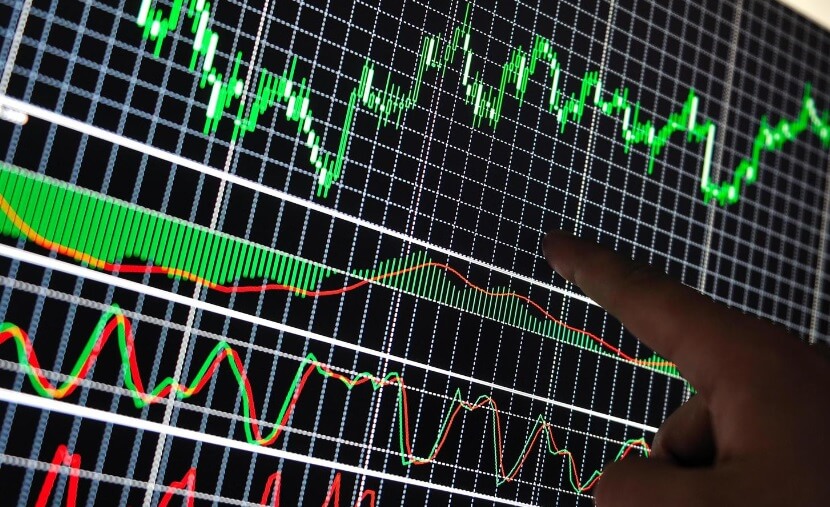
The timing of entering a forex trade is crucial for traders to maximize their profitability. Understanding the best time to trade forex is essential in order to identify optimal entry points and make informed trading decisions. This article will delve into the key factors and strategies to consider when timing forex trades.
Enter a forex trade when your strategy aligns with market conditions, confirming your analysis with indicators or price action signals. Plan entry points based on risk tolerance and potential for profit within your strategy.
When to Enter a Forex Trade
The beginning of the trading week sets the tone for forex markets. Typically, Mondays exhibit a slow pace as traders re-engage after the weekend. However, within the first 24 hours, the market gains momentum, making Tuesday through Thursday prime trading days. During this period, investors refocus their attention on trading activities, contributing to a dynamic market environment with increased opportunities for profitable trades.
Determining the Best Entry Points
In forex trading, identifying the optimal entry point is a critical aspect that can significantly impact the success of a trader. This process involves a multifaceted approach, considering various factors to make well-informed decisions.
Market Fluctuations and Timing
Determining the best entry points requires a keen understanding of market fluctuations and timing. One strategic approach is to enter a trade at the bottom of a trend when the market is poised for an upward movement. This tactic capitalises on potential gains as the market begins to ascend. For example, if a currency pair is in a downtrend and shows signs of reversal, entering the trade at the bottom of the trend may result in favourable outcomes.
Trading Psychology, Plan & Style
Successful entry points are also influenced by individual trading psychology, plan, and style. Traders must align their entry decisions with their risk tolerance, investment goals, and preferred trading strategies. For instance, a day trader may prefer quick entry and exit points, while a swing trader might opt for more extended holding periods. By tailoring entry points to personal preferences, traders can enhance the effectiveness of their strategies.
Technical Analysis: A Crucial Factor
Technical analysis plays a pivotal role in determining entry points. Traders analyse price charts, patterns, and indicators to identify potential market movements. A common practice is to wait for confirmatory signals, such as candlestick patterns or trendline breaks, before entering a trade. For instance, a trader might observe a bullish reversal pattern, like a double bottom, as a signal to enter a buy trade.
Current and Historical Trend Data
Examining both current and historical trend data provides valuable insights into potential entry points. Traders often look for trends that align with their trading strategy, whether it’s trend following or countertrend trading. Utilising tools like moving averages or trendlines helps in identifying the direction of the trend. For example, if a currency pair has been consistently making higher highs and higher lows, entering a trade during a pullback could be an opportune moment.
Avoiding Traps: The Pitfalls of Delaying or Rushing Entry
One common pitfall in determining entry points is delaying or rushing into a trade. Holding off too long may lead to missed opportunities and reduced profit potential. Conversely, entering a trade hastily might result in getting a less favourable price. Striking the right balance is crucial. Conducting thorough research, understanding the market conditions, and having a clear plan can help traders avoid these traps.
The Role of Research in Effective Entry Points
Effective entry points are rooted in diligent research. Traders need to stay informed about economic indicators, geopolitical events, and market sentiment. For instance, if a major economic report is scheduled for release, it’s prudent to wait for the market’s reaction before entering a trade. Research provides the context needed to make informed decisions and enhances the ability to identify entry points with a higher probability of success.
Determining the best entry points in forex trading is a nuanced process that combines technical analysis, individual trading preferences, and a deep understanding of market dynamics. By integrating these factors and avoiding common pitfalls, traders can position themselves for success and capitalise on the ever-changing opportunities within the forex market.
Monitoring the Forex Market for Exit Signals: A Tactical Approach
Effective trading in the forex market goes beyond just identifying entry points; it involves a strategic and vigilant approach to monitoring exit signals. Traders must stay attuned to market conditions, technical indicators, and key signals to make informed decisions about when to close a trade.
Continuous Vigilance and Market Dynamics
Monitoring the market for exit signals demands continuous vigilance and a deep understanding of market dynamics. Traders need to keep a watchful eye on various aspects, including support and resistance levels, trendlines, and overall market sentiment. For instance, if a currency pair approaches a strong resistance level and shows signs of a reversal, it could be an indication to consider closing a long position.
Technical Indicators as Exit Signals
Technical indicators serve as valuable tools in identifying potential exit signals. For example, if a trader is using the Moving Average Convergence Divergence (MACD) indicator, a bearish crossover (when the MACD line crosses below the signal line) could signal a potential downtrend, prompting the trader to consider closing a long position. Each indicator provides unique insights, and traders often use a combination for a more comprehensive analysis.
Trendlines: Visual Cues for Exiting Trades
Trendlines, which are instrumental in identifying entry points, also play a crucial role in exit signals. If a currency pair has been following an upward trend and starts deviating significantly from the trendline, it might be an indication that the trend is losing momentum. This visual cue can prompt traders to consider closing their positions to secure profits before a potential reversal.
Market Sentiment Shifts: Recognising Change
Monitoring market sentiment is vital for identifying exit signals. Shifts in sentiment can occur due to economic events, geopolitical developments, or unexpected news. For example, if a positive economic report is released, resulting in a sudden surge in a currency pair’s value, a trader might decide to close a short position to mitigate potential losses.
Role of Support and Resistance Levels in Exiting Trades
Support and resistance levels act as key indicators for exit signals. If a currency pair approaches a strong support level after a prolonged downtrend and shows signs of bouncing back, it might be a signal for traders to consider closing short positions. Recognising these levels and their significance in the context of the current market conditions is essential for making well-informed exit decisions.
Adapting to Technical Indicator Trends
As technical indicators evolve, traders must adapt to changing trends. For instance, if the Relative Strength Index (RSI) indicates an overbought condition, and the currency pair shows signs of stalling, it could be an opportune moment to exit a long position. Adapting to these indicators’ signals ensures that traders stay ahead of potential market reversals.
Combining Multiple Signals for Informed Exits
Successful traders often use a combination of signals for more informed exit decisions. By considering various indicators, trendlines, and market dynamics simultaneously, traders can reduce the risk of relying on a single source of information. For example, if both a trendline break and a bearish MACD crossover occur simultaneously, it may strengthen the case for closing a long position.
Monitoring the forex market for exit signals is an integral part of successful trading. By combining technical analysis, vigilance, and an understanding of market dynamics, traders can make informed decisions about when to exit a trade. Recognising visual cues, leveraging technical indicators, and staying adaptable in response to market shifts contribute to a comprehensive and strategic approach to exits in forex trading.
Optimal Timing: When to Enter a Forex Trade
The timing of entering a forex trade is crucial for traders to maximize their profitability. Understanding the best time to trade forex is essential in order to identify optimal entry points and make informed trading decisions. This article will delve into the key factors and strategies to consider when timing forex trades.
Factors to Consider for Forex Trade Timing
When timing forex trades, there are several important factors to keep in mind. Firstly, monitoring news releases and economic data is crucial as they can have a significant impact on currency prices. Major news events such as interest rate decisions and GDP data can present trading opportunities and should be carefully considered.
Market volatility is another factor to watch out for. Higher volatility can lead to larger price movements and create favorable entry points. Traders should be aware of market conditions and use technical analysis indicators to identify optimal trading opportunities.
Forex entry signals also play a vital role in timing trades. By utilizing these signals and technical analysis tools, traders can improve their trade timing accuracy and increase the chances of success. Developing effective entry strategies and adhering to a trading plan can further enhance trade timing.
The Importance of Market Conditions and Trading Plan
Analyzing market conditions is crucial to determine the best timing for forex trades. Traders should carefully study market trends, patterns, and price action to identify entry points that align with their trading strategy. Utilizing forex trading charts and technical analysis tools can provide valuable insights for making informed timing decisions.
Having a well-defined trading plan is equally important. This plan should outline specific entry and exit strategies, risk management techniques, and trade objectives. A disciplined approach, sticking to the trading plan, and considering personal trading preferences and risk tolerance are key elements for successful forex trading.
Key Takeaways:
- Timing is crucial when entering a forex trade to maximize profitability.
- Monitoring news releases and economic data helps identify trading opportunities.
- Market volatility can create favorable entry points for traders.
- Utilizing forex entry signals and technical analysis tools enhances trade timing accuracy.
- A well-defined trading plan is essential for successful forex trading.
Factors to Consider for Forex Trade Timing
When timing forex trades, there are several important factors that traders need to consider to maximize their trading opportunities and increase the chances of success. These factors include news releases, economic data, market volatility, forex entry signals, timing indicators, and trading strategies.
News Releases and Economic Data
Major news releases, such as interest rate decisions and GDP data, can have a significant impact on currency prices. Traders should stay informed about upcoming economic events and news releases that may affect the forex market. By monitoring these events and understanding their potential impact, traders can identify trading opportunities and make better-informed decisions about when to enter a trade.
“By staying updated with news releases and economic data, traders can identify trading opportunities and make more profitable decisions.”
Market Volatility
Market volatility is another crucial factor to consider when timing forex trades. Volatility refers to the degree of price fluctuations in the market. Higher volatility often leads to larger price movements, presenting more trading opportunities. Traders should pay close attention to market volatility and adjust their trading strategies accordingly. By analyzing historical price movements and using volatility indicators, traders can identify optimal entry points and take advantage of market fluctuations.
Forex Entry Signals and Timing Indicators
Utilizing forex entry signals and timing indicators can significantly enhance trade timing. These indicators are designed to identify potential entry points based on market conditions, trend analysis, and technical patterns. By incorporating these signals and indicators into their trading strategy, traders can improve their ability to identify optimal entry points and make well-timed trades.
Effective Entry Strategies and Trading Indicators
Developing effective entry strategies and utilizing trading indicators are key to successful trade timing. Entry strategies involve setting specific criteria for entering a trade, such as using a combination of technical analysis tools or waiting for confirmation signals. Trading indicators, such as oscillators and moving averages, can provide valuable insights and help traders make more accurate predictions about market trends and potential entry points.
By combining effective entry strategies with the use of trading indicators, traders can increase their chances of successful trades and optimize their trading results.
“Effective entry strategies and the use of trading indicators are essential for maximizing trade timing in the forex market.”
The Importance of Market Conditions and Trading Plan
In the world of forex trading, understanding market conditions and having a well-defined trading plan are key to achieving success. Traders must carefully analyze market trends, patterns, and price action to identify optimal entry points for their trades. Forex market analysis, including the use of trading charts and technical analysis tools, can provide valuable insights and help traders make informed decisions about trade timing.
Having a trading plan is equally important in navigating the forex market. A trading plan outlines entry and exit strategies, risk management techniques, and trade objectives. By following a well-defined plan, traders can maintain discipline and effectively manage their trades. It is crucial to consider various factors when determining the best timing for forex trades, such as personal trading style, risk tolerance, and individual preferences.
Implementing forex trade entry strategies and timing trades perfectly can significantly impact trading profitability. By aligning trade entries with optimal market conditions and adhering to a well-thought-out plan, traders can maximize their chances of success in the forex market. It is important to remember that there are no guarantees in trading, but by analyzing market conditions, leveraging forex trading tips, and incorporating optimal trade entry timing, traders can position themselves for potential profitable opportunities.
FAQ
When is the best time to enter a forex trade?
The best time to enter a forex trade is during the market hours when the forex market is most active. The U.S./London market overlap (8 a.m. to noon EST) has the highest trading volume and provides the best trading opportunities. It is also beneficial to trade during overlaps between open markets, such as the U.S./London overlap and the Sydney/Tokyo overlap (2 a.m. to 4 a.m.), to take advantage of increased liquidity and trading activity.
What factors should be considered for forex trade timing?
When timing forex trades, it is important to consider factors such as news releases, economic data, and market volatility. Major news releases and economic data can significantly impact currency prices and create trading opportunities. Additionally, monitoring market volatility can help identify periods of increased price movements and trading opportunities. Utilizing forex entry signals, timing indicators, and trading indicators can assist in identifying optimal entry points and making informed trading decisions.
How important are market conditions and a trading plan in forex trading?
Market conditions play a crucial role in determining the timing of forex trades. By analyzing market trends, patterns, and price action, traders can identify optimal entry points. Conducting thorough market analysis using forex trading charts and technical analysis tools can provide valuable insights for decision-making. It is also essential to have a well-defined trading plan that outlines entry and exit strategies, risk management techniques, and trade objectives. A disciplined approach and adherence to the trading plan can maximize trading profitability.

















